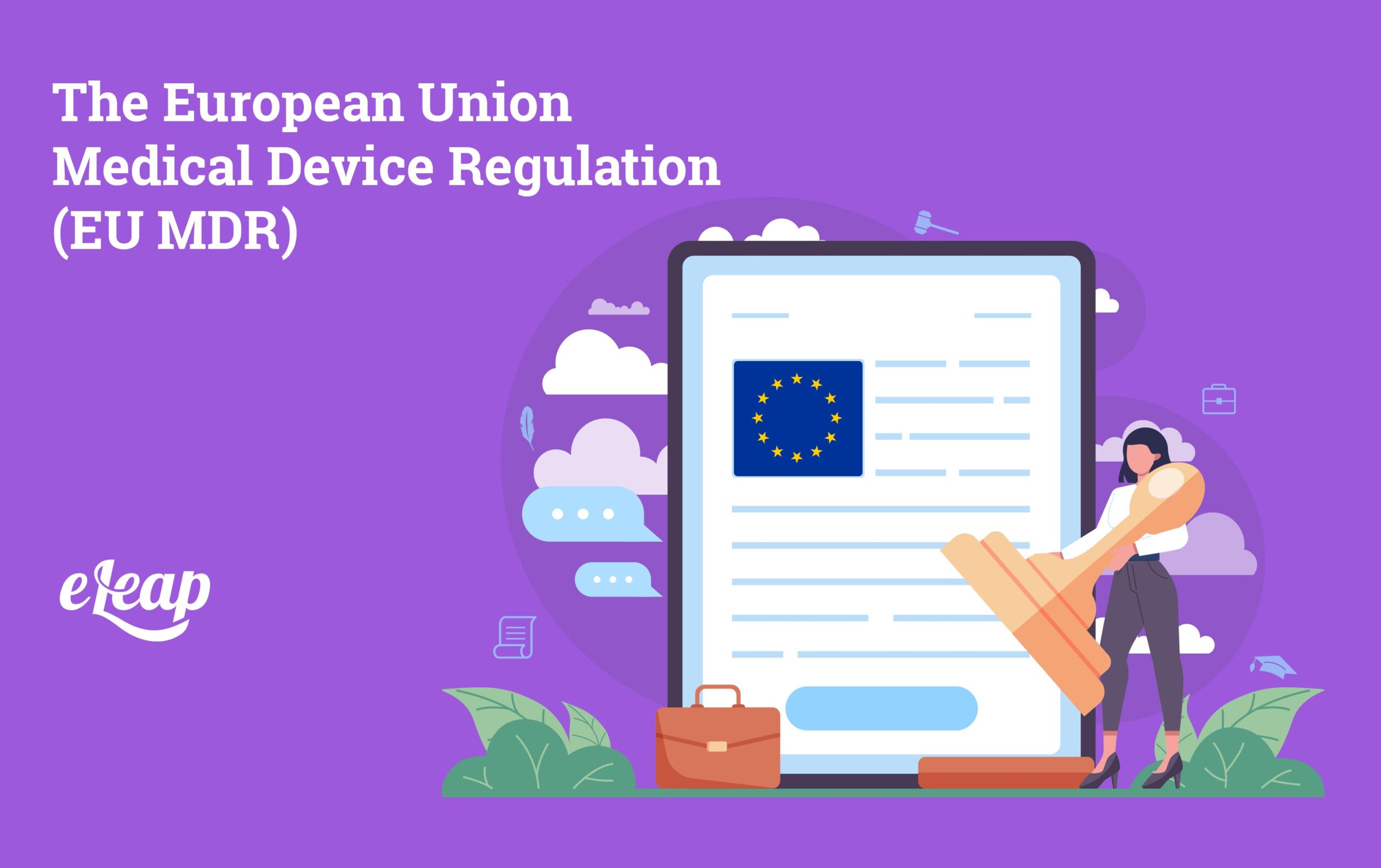The European Union Medical Device Regulation (EU MDR)

The European Union Medical Device Regulation (EU MDR) has significantly changed the legal framework for medical devices on the European market. This inclusive regulation aims to promise the efficiency and dependability of medical devices and increase transparency and patient security. Let’s inspect the specifics of the EU MDR and how it affects the medical device part.
The Medical Device Directive (MDD) and the Active Implantable Medical Device Directive (AIMDD) have been exchanged by a new set of laws known as the EU MDR. It deals with a healthier framework for regulating medical devices, with more severe rules for risk management, post-market observation, and clinical evidence.
The EU MDR was developed to correct the shortages in the existing regulatory framework and accommodate technological improvements and changes in the Healthcare Act. It attempts to raise market supervision, fortify patient safety rules, and raise the ability and reliability of medical equipment sold in the European Union. The European Medicines Directive (EU MDR) imposes more severe regulations on medical device producers, including keen examination of clinical data, prolonged post-market surveillance duties, and more challenging specifications for notified organizations. Producers of medical devices must submit more thorough documentation under the EU MDR, including clinical data and in-depth technical documentation that proves the effectiveness and security of their products.
Why Is the EU MDR Significant?

The European Union Medical Device Regulation (EU MDR) holds great importance because of its all-encompassing strategy for guaranteeing the security, effectiveness, and caliber of medical devices sold in Europe. Fundamentally, EU MDR aims to put patient safety first by enforcing strict regulations and encouraging responsibility across the whole lifespan of medical devices. EU MDR simplifies regulatory procedures, making it easier for manufacturers to comply with rules and enabling uniformity in regulatory standards among EU member states by supplanting outmoded directives with a single framework.
Promoting technological breakthroughs and innovation in the medical device industry is a fundamental aspect of EU MDR. By establishing precise regulatory standards and promoting research and development, the legislation forces medical device producers to create safer and more efficient products that cater to the changing requirements of patients and healthcare professionals. This focus on innovation helps patients by expanding their treatment options and makes the European medical device sector more competitive worldwide.
In addition, manufacturers that adhere to EU MDR criteria have better access to domestic and international markets. Within the European market, the unified regulatory framework facilitates trade, lowers entry barriers, and encourages fair competition. Producers can confidently tap into a broader customer base by adhering to EU MDR principles, increasing their market potential and inspiring economic growth in the medical device sector.
The EU MDR intensely emphasizes transparency and responsibility regarding medical device regulation. The rule seeks to rapidly detect and resolve any risks or problems related to device use through the requirement of post-market solid surveillance mechanisms and improved supply chain traceability resources. Ultimately, this proactive strategy improves healthcare outcomes by fostering consumer confidence in medical equipment and boosting patient safety.
Additionally, the medical device industry’s quality management systems (QMS) are strengthened by EU MDR. Manufacturers may guarantee consistent product quality, comply with legal obligations, and prove compliance with relevant standards by implementing an efficient QMS. EU MDR enhances medical devices’ general dependability and safety by prioritizing quality assurance and risk management.
EU MDR Regulations
A set of rules governing medical strategies in the European Union (EU) is recognized as the EU Medical Device Regulation (EU MDR). It replaced the previous Active Implantable Medical Device Directive (AIMDD) and Medical Device Directive (MDD) delivered by the EU. The EU MDR goals are to improve clearness and traceability across the supply chain while assuring a better standard of safety and efficiency for medical devices.
Essential aspects of the EU MDR consist of:
- Expanded Scope: The regulations cover a greater variety of medical devices, including some that were either previously unregulated or came under distinct categories.
- More robust Scrutiny: Manufacturers must comply with more vital guidelines requiring more comprehensive clinical data and post-market surveillance, especially for high-risk products.
- Unique Device Identification (UDI): To enhance traceability and make recalls easier, devices must be labeled uniquely.
- Strengthened Clinical Evidence Necessities: To prove the efficiency and safety of their devices, producers must submit more extensive clinical suggestions.
- Tighter Post-Market checking: Post-market checking is subject to tighter regulations, including the systematic collecting and examination of adverse actions and device performance.
- Duties of Economic Workers: The regulations outline the tasks of different economic workers involved in the supply chain, such as traders, distributors, producers, and authorized representatives.
- Improved Transparency and Traceability: By making extensive databases, such as the European Database on Medical Devices (EUDAMED), the principles seek to increase the transparency and traceability of medical devices.
- Tighter Oversight of Notified Bodies: Tighter authorization and continuous supervision standards apply to Notified Bodies, which assess medical device compliance. Assumed in 2017, the EU MDR has a provisional implementation period before coming into full force in May 2021. Producers, importers, suppliers, and other parties engaged in the medical device area within the European Union must adhere to the EU MDR.
To sum up, document control is an essential component that guarantees effective business information Operating Procedure (SOP) for Data Integrity and Management. Organizations may reduce costs, manage risks, and foster creativity in today’s fast-paced corporate world by implementing strong document control policies, leveraging technology, and adhering to legal requirements.
Common Questions Regarding EU MDR:
- How can businesses make sure document management complies with regulations?
Businesses can guarantee regulatory compliance by using technology to automate compliance duties, enforcing pertinent laws and standards, implementing robust document control Procedures, and regularly training staff members.
- What are some typical obstacles to implementing document control?
Ensuring data security and privacy, upholding document accuracy and integrity, handling massive document volumes, and resolving problems with document versioning and access control are typical obstacles in the implementation of document control.